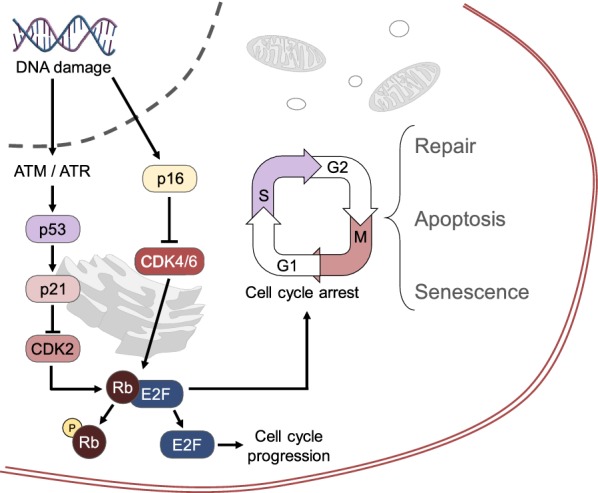Fig. 1.

Pathways leading from the DNA damage response (DDR) to cell senescence. E2F is a transcription factor that stimulates the transition from G1 to S phase of the cell cycle. The retinoblastoma protein (Rb) is normally complexed with E2F, inhibiting it and preventing mitosis. When Rb is phosphorylated by a cyclin-dependent kinase (CDK), it releases E2F and cell division ensues. DNA damage activates the ATM or ATR kinases, stabilizing p53 and subsequently stimulating the expression of the protein p21, which is an inhibitor of the cyclin-dependent kinase CDK2. When CDK2 is inhibited by p21 as a consequence of the DDR, Rb remains complexed with E2F, and the cell enters a state of apoptosis or senescence. The DDR also leads to enhanced expression of p16, which inactivates CDK4 and CDK6, also preventing Rb phosphorylation and cell cycle progression
